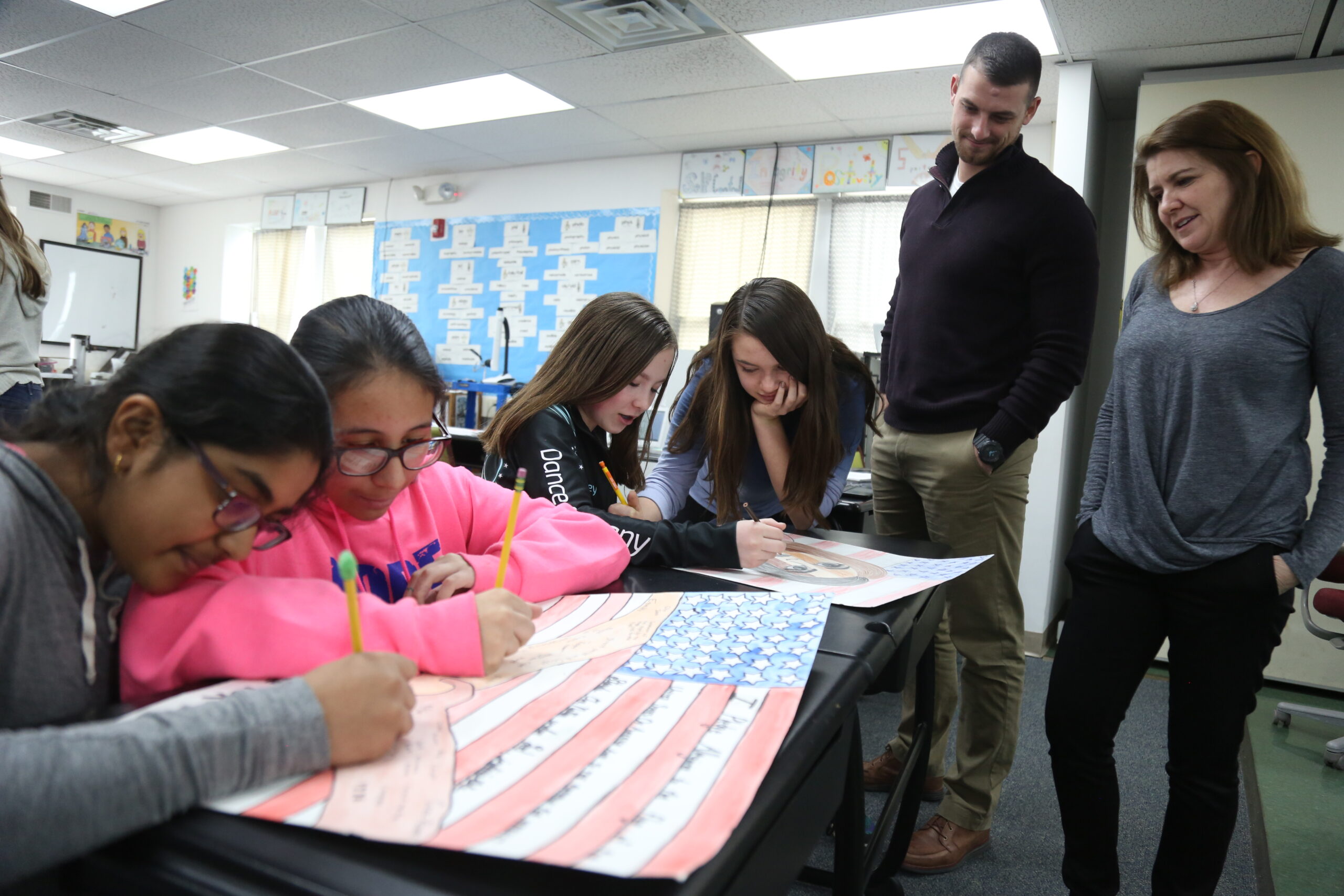Although I have been teaching at my current school since 2002, in the beginning of my career—many times—my hand was on the door. I started out working for large urban and suburban districts in three states. After a move to Pennsylvania, I accepted a position as a seventh grade literature teacher. I was handed a stack of tests, a set of anthologies, and a timeline for each unit’s completion. The first prescribed unit was “Animal Stories.” All of the stories were chosen for me. As I watched my students take that first test, I thought, “They have no choice, and neither do I.” I left at the end of the year.
It’s not that I didn’t try. In small ways, I made the classroom fit a piece of my vision by introducing some project work. Mostly, though, I worked to implement others’ ideas. Six people supervised me. When I explained to them that I was having a difficult time establishing a positive, creative culture within the confines of the curriculum, I remember the puzzled expressions and questions: “Do you want to propose a change to some of the test questions? Should the “Rikki-Tikki-Tavi” worksheet be reworked?”
This is how it happens. I was nearly part of the many waves of teachers who start out ready to change the world, but are met with the realities of teaching in some schools. I believed teaching was a profession. In just a few years, I saw others around me talk as if teaching were merely a good career. Some even viewed teaching as just an hourly job; they clocked in and out, presented information, and left the rest up to the powers that be. I saw an “us vs. them” mentality between those in authority and those who do the work of teaching. Could I make a career out of this? I wasn’t sure.
In the middle of my quarter-life crisis, a student that year gave me a coffee mug that read, “Be the change you wish to see in the world.” From my vantage point, I didn’t see how I could get far. I was no Ghandi. I could concede that point to the universe! Still, I was a long way from my original vision. Surely, I imagined, my energies could be better spent elsewhere.
I now see that my experience is far from unique. Owen Phillips, in his 2015 article, “Revolving Door of Teachers Costs Schools Billions Every Year,” interviewed Dr. Richard Ingersoll of the University of Pennsylvania. After looking at decades of data on teacher turnover and retention, he concluded: “One of the main factors is the issue of voice, and having a say, and being able to have input into the key decisions in the building that affect a teacher’s job. This is something that is a hallmark of professions…and it’s very highly correlated with the decision whether to stay or leave.”
So, why did I ultimately stay?
 Just as I was beginning to look for another line of work and a new school for my oldest son, I toured the Souderton Charter School Collaborative. That first tour made a profound impression on me. Teachers, administrators, parents, and students were all working to create a school based on principles. They were passionate about equity, experiential education, and community outreach. All adopted the mission of the school as their own, and students were at the center of all decisions. These teachers were not merely implementing others’ ideas and policies. They were leading the way. I enrolled my son and soon began teaching.
Just as I was beginning to look for another line of work and a new school for my oldest son, I toured the Souderton Charter School Collaborative. That first tour made a profound impression on me. Teachers, administrators, parents, and students were all working to create a school based on principles. They were passionate about equity, experiential education, and community outreach. All adopted the mission of the school as their own, and students were at the center of all decisions. These teachers were not merely implementing others’ ideas and policies. They were leading the way. I enrolled my son and soon began teaching.
I was invited to create, decide, collaborate, and lead. I no longer felt crushed. At first, it was daunting—but I had room to re-think and explore. Teachers at our school have full or partial autonomy over our professional development, budget, curriculum, assessments, teacher evaluations, school policies, scheduling, and hiring. I have always been held accountable for my students’ achievement, but I have not always had autonomy over all that affects my practice. Teaching in this environment is challenging and demanding. Still, we stay. Our school is one of the most successful schools in the state, and our turnover is minimal.
Today, schools who use this type of collaborative governance structure are called teacher-powered. Teacher-powered schools offer an opportunity to transform teaching and create real professional roles for teachers. Across the country in over 120 schools, teacher leaders are creating dynamic, individualized learning organizations where students are thriving. Reworking some test questions or voting to nix a worksheet? It just wasn’t enough. For me, staying in this profession requires more than input; I need to have actual leadership. This is why I’ve stayed, happily accumulating dozens of mugs.

Julie and students at Souderton Charter School Collaborative.
Julie Cook teaches middle school students at the Souderton Charter School Collaborative. SCSC is a K-8 school in Souderton, Pennsylvania. Learn more about Julie and her fellow Teacher Ambassadors.
 NEWSLETTER SIGN-UP
NEWSLETTER SIGN-UP



